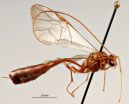(Press-News.org) CAMBRIDGE, MA -- A new study from MIT implicates a family of RNA-binding proteins in the regulation of cancer, particularly in a subtype of breast cancer. These proteins, known as Musashi proteins, can force cells into a state associated with increased proliferation.
Biologists have previously found that this kind of transformation, which often occurs in cancer cells as well as during embryonic development, is controlled by transcription factors -- proteins that turn genes on and off. However, the new MIT research reveals that RNA-binding proteins also play an important role. Human cells have about 500 different RNA-binding proteins, which influence gene expression by regulating messenger RNA, the molecule that carries DNA's instructions to the rest of the cell.
"Recent discoveries show that there's a lot of RNA-processing that happens in human cells and mammalian cells in general," says Yarden Katz, a recent MIT PhD recipient and one of the lead authors of the new paper. "RNA is processed at several points within the cell, and this gives opportunities for RNA-binding proteins to regulate RNA at each point. We're very interested in trying to understand this unexplored class of RNA-binding proteins and how they regulate cell-state transitions."
Feifei Li of China Agricultural University is also a lead author of the paper, which appears in the journal eLife on Dec. 15. Senior authors of the paper are MIT biology professors Christopher Burge and Rudolf Jaenisch, and Zhengquan Yu of China Agricultural University.
Controlling cell states
Until this study, scientists knew very little about the functions of Musashi proteins. These RNA-binding proteins have traditionally been used to identify neural stem cells, in which they are very abundant. They have also been found in tumors, including in glioblastoma, a very aggressive form of brain cancer.
"Normally they're marking stem and progenitor cells, but they get turned on in cancers. That was intriguing to us because it suggested they might impose a more undifferentiated state on cancer cells," Katz says.
To study this possibility, Katz manipulated the levels of Musashi proteins in neural stem cells and measured the effects on other genes. He found that genes affected by Musashi proteins were related to the epithelial-to-mesenchymal transition (EMT), a process by which cells lose their ability to stick together and begin invading other tissues.
EMT has been shown to be important in breast cancer, prompting the team to look into Musashi proteins in cancers of non-neural tissue. They found that Musashi proteins are most highly expressed in a type of breast tumors called luminal B tumors, which are not metastatic but are aggressive and fast-growing.
When the researchers knocked down Musashi proteins in breast cancer cells grown in the lab, the cells were forced out of the epithelial state. Also, if the proteins were artificially boosted in mesenchymal cells, the cells transitioned to an epithelial state. This suggests that Musashi proteins are responsible for maintaining cancer cells in a proliferative, epithelial state.
"These proteins seem to really be regulating this cell-state transition, which we know from other studies is very important, especially in breast cancer," Katz says.
Embryonic development and cancer
The researchers found that Musashi proteins repress a gene called Jagged1, which in turn regulates the Notch signaling pathway. Notch signaling promotes cell division in neurons during embryonic development and also plays a major role in cancer.
When Jagged1 is repressed, cells are locked in an epithelial state and are much less motile. The researchers found that Musashi proteins also repress Jagged1 during normal mammary-gland development, not just in cancer. When these proteins were overexpressed in normal mammary glands, cells were less able to undergo the type of healthy EMT required for mammary tissue development.
The researchers are now trying to figure out how Musashi proteins, which are normally turned off after embryonic development, get turned back on in cancer cells. "We've studied what this protein does, but we know very little about how it's regulated," Katz says.
He says it is too early to know if the Musashi proteins might make good targets for cancer drugs, but they could make a good diagnostic marker for what state a cancer cell is in. "It's more about understanding the cell states of cancer at this stage, and diagnosing them, rather than treating them," he says.
INFORMATION:
The research was funded by the National Institutes of Health.
Written by Anne Trafton, MIT News Office
In 1912, three species in the parasitic wasp genus Ophion were described by two different entomologists, increasing the number of known species in North America to eleven. It has long been known that the actual diversity is much higher; however, it took 102 years for any additional species to be described.
"The main reason for this is that everyone has assumed that Ophion are just too difficult to tell apart. Museum collections are full of unidentified Ophion, but nobody has wanted to face the challenge of sorting them out" said Marla Schwarzfeld, an entomologist who ...
CAMBRIDGE, Mass., December 15 -- Scientists at The Forsyth Institute and Tufts University have succeeded in describing and validating a unique system of oral vaccine delivery using a common bacteria found in the mouth. Findings published today by Elsevier in Microbes and Infection identify Streptococcus mitis as a successful vector for oral mucosal immunization, and further research will determine its potential clinical use in tuberculosis vaccine development.
"Although injected vaccines are traditionally viewed as effective means of immunization to protect internal organs, ...
The sudden appearance of a face within our visual field can affect the motor action accompanying a gesture even if the face is totally unrelated to what we are doing and even if we try to ignore it. At one condition, though: the face must display an emotionally significant expression. A study conducted by scientists of the International School for Advanced Studies in Trieste, and just published in Psychonomic Bullettin & Review, describes the phenomenon in detail.
Many are the things that can influence our actions at the motor level. Among them, a particularly effective ...
New Rochelle, NY, December 15, 2014-Adiponectin, a collagen-like protein secreted by fat cells, derives from the ADIPOQ gene. Variations in this gene may increase risk for type 2 diabetes, cardiovascular disease, and various cancers. A new study that links specific variations in the ADIPOQ gene to either higher or lower colorectal cancer risk is published in Genetic Testing and Molecular Biomarkers, a peer-reviewed journal from Mary Ann Liebert, Inc., publishers. The article is available on the Genetic Testing and Molecular Biomarkers website until January 11, 2014.
Xin ...
Since August 2014, aflibercept (trade name Eylea) has been available also for patients with visual impairment due to diabetic macular oedema (DMO). The German Institute for Quality and Efficiency in Health Care (IQWiG) examined in a dossier assessment whether this drug offers an added benefit over the appropriate comparator therapy.
According to the findings, an added benefit in this therapeutic indication is not proven: The data showed no relevant differences between the treatment groups for patients in whom the fovea centralis is also affected. The drug manufacturer ...
Squid, what is it good for? You can eat it and you can make ink or dye from it, and now a Penn State team of researchers is using it to make a thermoplastic that can be used in 3-D printing.
"Most of the companies looking into this type of material have focused on synthetic plastics," said Melik C. Demirel, professor of engineering science and mechanics. "Synthetic plastics are not rapidly deployable for field applications, and more importantly, they are not eco-friendly."
Demirel and his team looked at the protein complex that exists in the squid ring teeth (SRT). ...
The team from The University of Nottingham and Queen Mary University of London, spent ten months studying to the ways cows communicate with their young, carefully examining acoustic indicators of identity and age.
They identified two distinct maternal 'calls'. When cows were close to their calves, they communicated with them using low frequency calls. When they were separated - out of visual contact - their calls were louder and at a much higher frequency.
Calves called out to their mothers when they wanted to start suckling. And all three types of calls were individualised ...
ANN ARBOR--It's not unusual for people to use war metaphors such as "fight" and "battle" when trying to motivate patients with cancer.
But a new University of Michigan study indicates that using those words can have an unintended negative effect.
David Hauser, a U-M doctoral student in psychology, and colleague Norbert Schwarz of the University of Southern California, found in three studies that exposure to metaphoric language relating cancer to an enemy significantly lessens the extent to which people consider cancer-prevention behaviors.
"Hearing metaphoric utterances ...
WASHINGTON D.C., Dec. 15, 2014--Cervical cancer is, in many ways, a shining example of how successful the war on cancer can be. Thanks largely to the advent of Pap smear screening, U.S. cervical cancer deaths decreased dramatically, by more than 60 percent, between 1955 and 1992. In the last two decades, better treatment outcomes and more powerful imaging techniques have steadily pushed 5-year survival rates ever higher. The latest weapons in modern medicine's arsenal are two new vaccines that were recently approved by the U.S. Food and Drug Administration for preventing ...
Airports are now subject to careful security surveillance, but many coastal towns and ports are not; they often lack radar installations to keep track of small boats, meaning terrorists could easily use speedboats to approach the coastline and bring explosives on land. Now, researchers at the Fraunhofer Institute for Communication, Information Processing and Ergonomics FKIE in Bonn developed a passive surveillance system for littoral regions based on mobile radio illumination called Passive Coherent Location (PCL). It passively employs the continuous radio signals emitted ...





